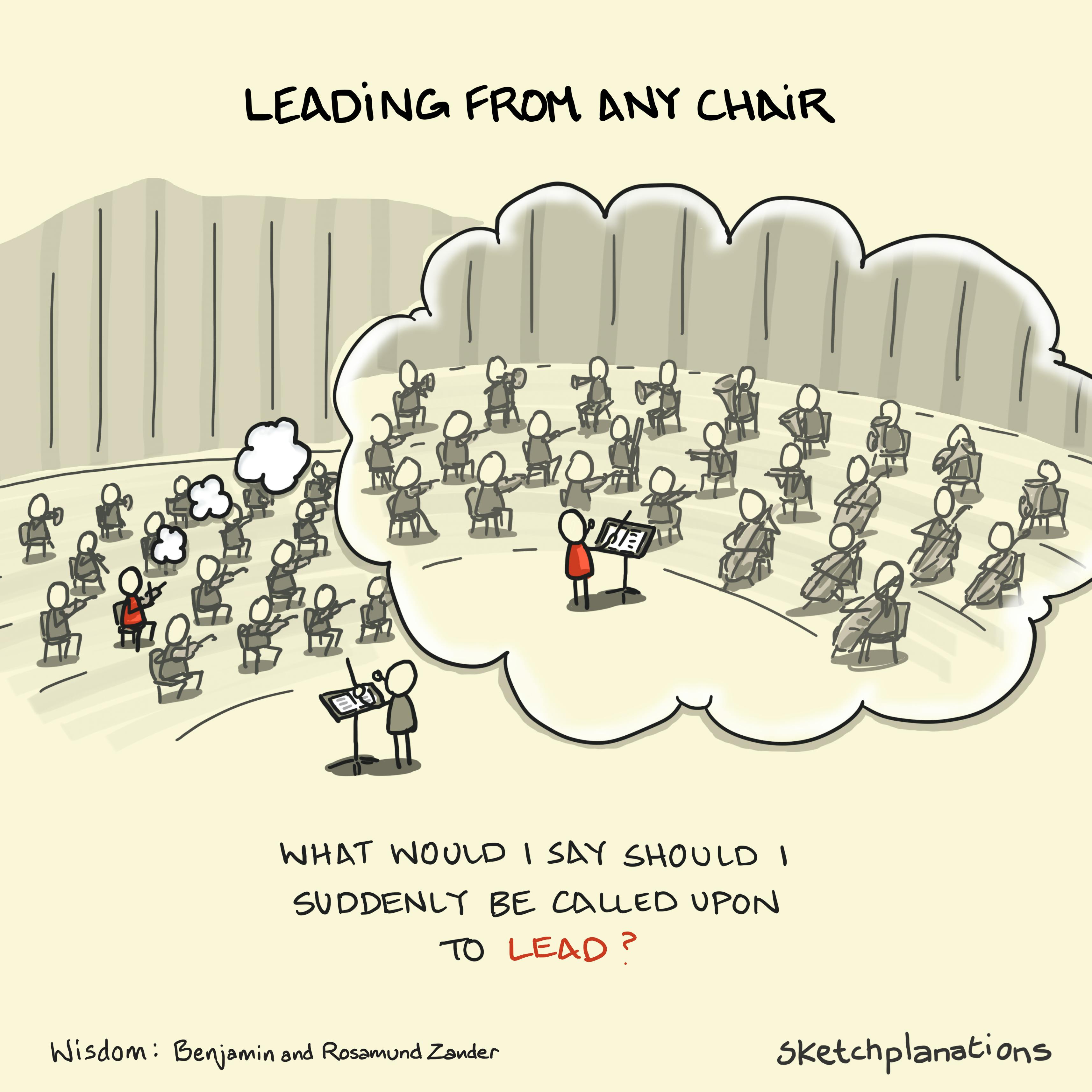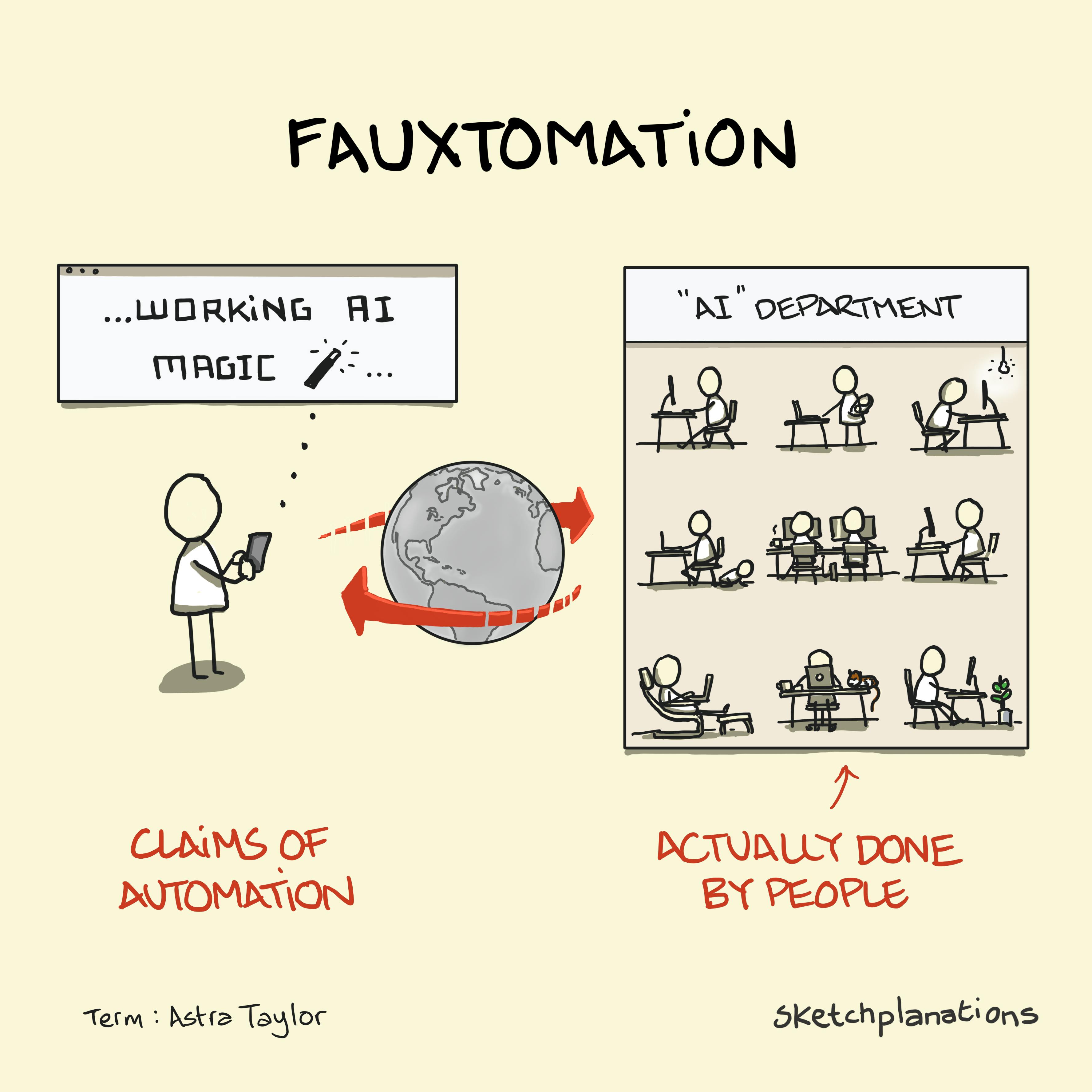
Leading from Any Chair
Leading from Any Chair is the idea that we all have the opportunity to influence the action even when we're not standing at the front. It's a principle for effective leadership and teaching yourself and others to lead. The Art of Possibility In their inspiring book, The Art of Possibility, Benjamin and Rosamund Zander relate a story from renowned violist Eugene Lehner, who played in the Kolish Quartet and Boston Symphony Orchestra. One day, in an interpretation class led by Zander with Lehner as a guest coach, Ben Zander asked him, "How can you bear to play day after day in an orchestra led by conductors, many of whom must know so much less than you?" Lehner said he was playing in a rehearsal in his first year in the orchestra when the conductor, Koussevitsky, struggled to lead the orchestra as he wanted through a tricky Bach piece. A friend of Koussevitsky and fellow conductor, Nadia Boulanger, was sitting in on the session. Koussevitsky stopped and asked if Nadia would conduct the passage so he could hear what it sounded like from the back of the hall. Nadia conducted the passage without a hitch, and the rehearsal continued. But the episode left Lehner ever wondering and waiting for the moment when a conductor might say to him, "Lehner, you come up here and conduct. I want to go to the back of the hall and hear how it sounds." "It's now 43 years since that happened," said Lehner, "and it is less and less likely that I will be asked. However, in the meantime, I haven't had a single dull moment in a rehearsal as I sit wondering, 'What would I say to the orchestra, should I suddenly be called upon to lead?'" Stepping up to lead There are many occasions when I have personally grappled with whether now is the moment to step up and lead. Sometimes, I have taken them. Other times, I feel ashamed that I sat back and let events unfold without contributing. It's the easy path to defer to whoever's leading and consider that there may be better times to influence or say what you think needs to be said. Or you can take the view that we're all responsible in some way for what we're experiencing, and we all have the opportunity to influence for the better. You don't have to be the captain on the field to influence your fellow players. A typical example I've experienced is seeing a presenter struggle in a meeting, perhaps with technical difficulties or audience confusion. It may take only a little to try and help with the tech or to ask the presenter to explain a point that you see needs to be clarified for people. Or, as an audience member, you can sit back and consider it not your problem. Once, in the middle of a performance at a wedding, the music suddenly clicked off for the performer. Immediately picking up on the problem, the wedding photographer started singing the melody, picking up where the music left off. Getting the idea, all the guests joined in, continuing the music to the end. This quick intervention undoubtedly led to a better show for everyone, including the performer. Learning to lead When you choose to step up, it's an opportunity to learn to lead. You may discover that there's more to leading than it seems and gain empathy for the leaders around you. By constantly asking myself, "What would I say should I suddenly be called upon to lead?" I am mentally rehearsing for when I am needed, for when I am in the position of a leader. It speeds up my learning and keeps me always ready for action. It's one reason why always thinking of questions at a talk or conference is valuable. It forces you to engage with the material, and when the opportunity arises, you're ready to step up and ask about what matters to you or what everyone is thinking. Identifying passion and the leaders in front of you As a leader, if you believe you are superior, for example, as the conductor who doesn't consider the orchestra members to have anything to contribute to the interpretation of the music, then you are likely to suppress the voices of the very people you need to deliver. People want to contribute—that's why they attended the class, joined the company, or trained in their discipline. Rosamund Zander advises that, as a leader, we can train ourselves to spot the passion of the people in our teams. We can actively look for occasions to allow team members to lead. And if we don't see the passion, we can ask ourselves, "Who am I being that they are not shining?" Leading from Any Chair We can learn to lead at any time. So the next time you're just one in a crowd, consider that you can lead from any chair. Ask yourself, "What would I say if I were suddenly called upon to lead?" -- In case it wasn't clear, I highly recommend The Art of Possibility, which I listened to as an audiobook read by Benjamin and Rosamund. And I always recommend finding 20 mins to watch Benjamin Zander's classic TED talk, The Transformative Power of Classical Music. Left-buttock playing is a sketch I've been planning for a long time. Also see: Ask the question at talks Mindmap at conferences Push authority to information The Responsibility Poem: Whose job is it? The accountability ladder What drives us: Autonomy, Mastery, Purpose This is the last time I plan to draw an orchestra. I now know a little of what it must feel like to draw Where's Wally?…Leading from Any Chair is the idea that we all have the opportunity to influence the action even when we're not standing at the front. It's a principle for effective leadership and teaching yourself and others to lead. The Art of Possibility In their inspiring book, The Art of Possibility, Benjamin and Rosamund Zander relate a story from renowned violist Eugene Lehner, who played in the Kolish Quartet and Boston Symphony Orchestra. One day, in an interpretation class led by Zander with Lehner as a guest coach, Ben Zander asked him, "How can you bear to play day after day in an orchestra led by conductors, many of whom must know so much less than you?" Lehner said he was playing in a rehearsal in his first year in the orchestra when the conductor, Koussevitsky, struggled to lead the orchestra as he wanted through a tricky Bach piece. A friend of Koussevitsky and fellow conductor, Nadia Boulanger, was sitting in on the session. Koussevitsky stopped and asked if Nadia would conduct the passage so he could hear what it sounded like from the back of the hall. Nadia conducted the passage without a hitch, and the rehearsal continued. But the episode left Lehner ever wondering and waiting for the moment when a conductor might say to him, "Lehner, you come up here and conduct. I want to go to the back of the hall and hear how it sounds." "It's now 43 years since that happened," said Lehner, "and it is less and less likely that I will be asked. However, in the meantime, I haven't had a single dull moment in a rehearsal as I sit wondering, 'What would I say to the orchestra, should I suddenly be called upon to lead?'" Stepping up to lead There are many occasions when I have personally grappled with whether now is the moment to step up and lead. Sometimes, I have taken them. Other times, I feel ashamed that I sat back and let events unfold without contributing. It's the easy path to defer to whoever's leading and consider that there may be better times to influence or say what you think needs to be said. Or you can take the view that we're all responsible in some way for what we're experiencing, and we all have the opportunity to influence for the better. You don't have to be the captain on the field to influence your fellow players. A typical example I've experienced is seeing a presenter struggle in a meeting, perhaps with technical difficulties or audience confusion. It may take only a little to try and help with the tech or to ask the presenter to explain a point that you see needs to be clarified for people. Or, as an audience member, you can sit back and consider it not your problem. Once, in the middle of a performance at a wedding, the music suddenly clicked off for the performer. Immediately picking up on the problem, the wedding photographer started singing the melody, picking up where the music left off. Getting the idea, all the guests joined in, continuing the music to the end. This quick intervention undoubtedly led to a better show for everyone, including the performer. Learning to lead When you choose to step up, it's an opportunity to learn to lead. You may discover that there's more to leading than it seems and gain empathy for the leaders around you. By constantly asking myself, "What would I say should I suddenly be called upon to lead?" I am mentally rehearsing for when I am needed, for when I am in the position of a leader. It speeds up my learning and keeps me always ready for action. It's one reason why always thinking of questions at a talk or conference is valuable. It forces you to engage with the material, and when the opportunity arises, you're ready to step up and ask about what matters to you or what everyone is thinking. Identifying passion and the leaders in front of you As a leader, if you believe you are superior, for example, as the conductor who doesn't consider the orchestra members to have anything to contribute to the interpretation of the music, then you are likely to suppress the voices of the very people you need to deliver. People want to contribute—that's why they attended the class, joined the company, or trained in their discipline. Rosamund Zander advises that, as a leader, we can train ourselves to spot the passion of the people in our teams. We can actively look for occasions to allow team members to lead. And if we don't see the passion, we can ask ourselves, "Who am I being that they are not shining?" Leading from Any Chair We can learn to lead at any time. So the next time you're just one in a crowd, consider that you can lead from any chair. Ask yourself, "What would I say if I were suddenly called upon to lead?" -- In case it wasn't clear, I highly recommend The Art of Possibility, which I listened to as an audiobook read by Benjamin and Rosamund. And I always recommend finding 20 mins to watch Benjamin Zander's classic TED talk, The Transformative Power of Classical Music. Left-buttock playing is a sketch I've been planning for a long time. Also see: Ask the question at talks Mindmap at conferences Push authority to information The Responsibility Poem: Whose job is it? The accountability ladder What drives us: Autonomy, Mastery, Purpose This is the last time I plan to draw an orchestra. I now know a little of what it must feel like to draw Where's Wally?WWW…
Read more…





